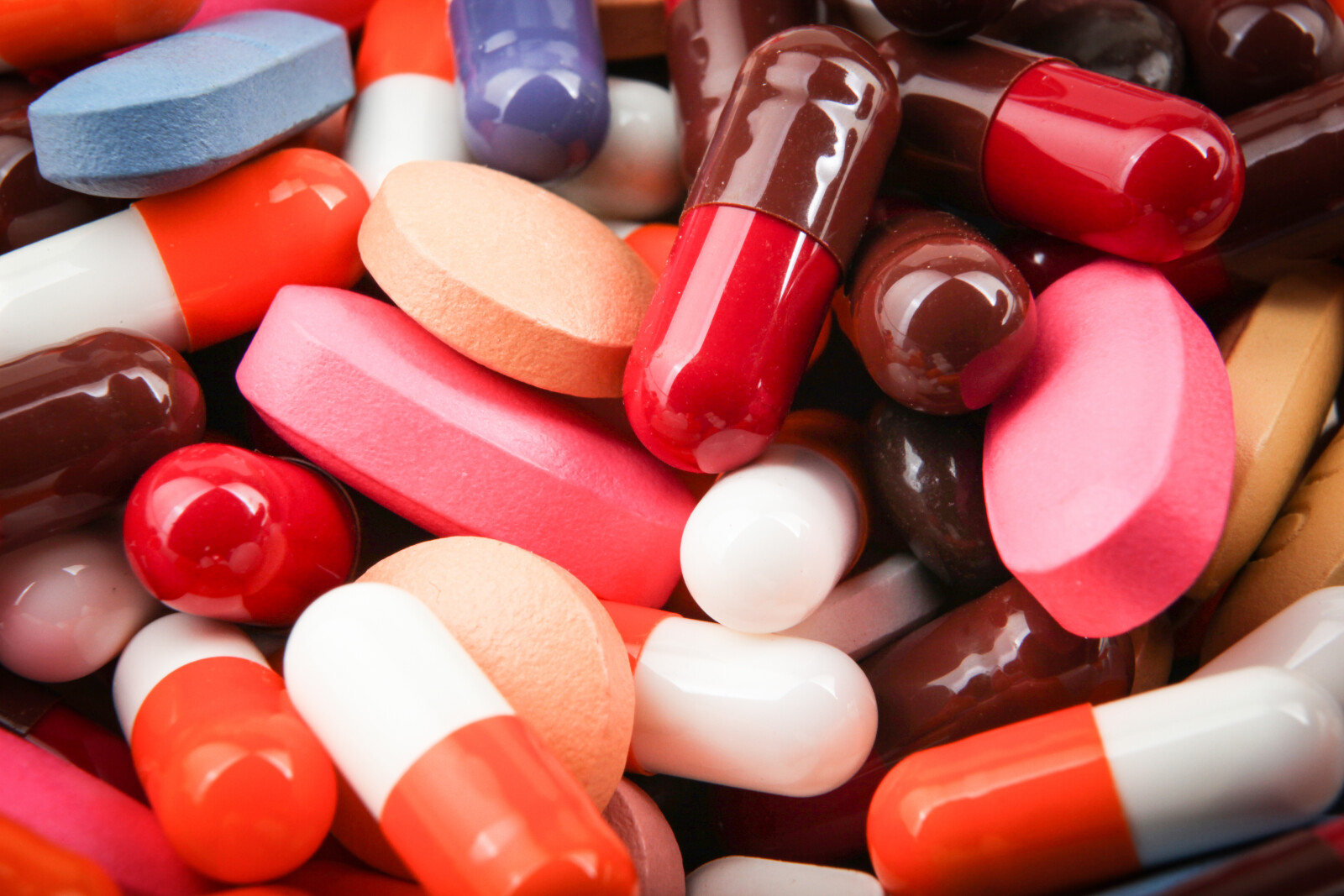Drug Interactions
Navigating the intricacies of drug interactions is akin to maneuvering through a complex maze. With polypharmacy on the rise, understanding these interactions becomes vital to prevent adverse effects. This article delves into the labyrinthine world of drug-drug, drug-food and drug-supplement interactions, their potential risks, and the precautions necessary for the safe and effective use of medications. The aim is to illuminate this often overlooked aspect of medication use, enhancing awareness and promoting patient safety.

Key Takeaways
- Older adults are at a higher risk of potential major drug interactions, as close to half of them take five or more medications.
- The risk of drug interactions increases with the number of medications a patient takes, with the risk being 15 percent for two medications, 40 percent for five medications, and 80 percent for seven medications.
- Adverse drug interactions can be a leading cause of death for people in hospitals.
- It is important to be cautious about potential interactions between medications and substances such as alcohol, caffeine, grapefruit juice, and certain supplements.
Understanding the Concept of Drug Interactions
The reader's understanding of the concept of drug interactions is crucial in managing their health, as these interactions can significantly alter the effectiveness and safety of their prescribed medications. This is particularly vital when exploring drug interactions in pediatric patients. Children's bodies process medications differently from adults, which can increase the risk of adverse reactions. The role of healthcare professionals in preventing drug interactions is therefore essential. They possess the knowledge to assess the potential for interactions, adjust dosages, and monitor responses. They can provide guidance to patients and caregivers on how to avoid harmful interactions. Their expertise is indispensable in ensuring the safe and effective use of medications, especially in vulnerable populations such as pediatric patients.
The Increasing Prevalence of Drug Interactions
Both the rise in polypharmacy and the aging population significantly contribute to the increasing prevalence of drug interactions. The escalation is largely driven by the growing complexity of medication regimens, particularly in older adults. Exploring age-related risks, it becomes evident that the elderly are more susceptible due to physiological changes and the multiple medications they often require. Concurrently, potential drug interactions in pediatric patients are becoming more apparent. This demographic traditionally has less clinical data available, making safe and effective prescribing challenging. The increased use of medicines in children, for both chronic and acute illnesses, elevates the possibility of interactions. Consequently, a heightened focus on understanding and mitigating drug interactions across all age groups is urgently needed.
Exploring Drug-Drug Interactions
Understanding the nuances of drug-drug interactions, and identifying the specific medications that may potentially interact, forms a crucial part of patient safety measures in any healthcare setting. For instance, potential drug interactions with anticoagulant medications present a significant risk. These medicines, when combined with certain drugs, can either enhance or reduce their blood-thinning effects, thereby leading to hemorrhages or blood clots. Similarly, exploring the risks of combining opioids with benzodiazepines is essential. Both medications depress the central nervous system, slowing breathing and potentially leading to overdose or death. Therefore, understanding these interactions is vital in preventing adverse events. This understanding can greatly improve a patient's healthcare outcome by ensuring safe and effective medication use.
Consequences of Drug Interactions
As we delve into the consequences of drug interactions, it's important to note that these can range from minor side effects to severe, life-threatening conditions. Adverse reactions such as dizziness, nausea, or an irregular heartbeat may occur, while in more serious cases, drug interactions can lead to kidney damage, heart failure, or even death. Preventing drug interactions is crucial, and it begins with a thorough understanding of all medications being taken, including over-the-counter drugs and dietary supplements. Healthcare providers play an integral role in managing drug interactions by reviewing medication regimens, adjusting dosages, or substituting medications as necessary. It's essential for patients to maintain open communication with healthcare professionals and report any side effects promptly.
Interactions Between Antidepressants and Other Drugs
One must carefully consider the potential for interactions when combining antidepressants with certain other medications. Antidepressants can have significant interactions with anticoagulants, leading to an increased risk of bleeding. Careful monitoring is key to safely managing this combination. Furthermore, the risks of combining opioids with antidepressants are noteworthy. Both opioids and antidepressants impact the brain's neurotransmitters, which can lead to a dangerous condition known as serotonin syndrome. Symptoms can range from mild - such as shivering and diarrhea - to severe, such as muscle rigidity, fever, and seizures. In the worst cases, this condition can be life-threatening. Therefore, it is vital for healthcare providers to carefully consider the potential interactions and closely monitor patients who are prescribed these combinations.
Common Interactions With Blood Pressure Medications
Several types of blood pressure medications exist, and each may interact differently with other drugs, thus requiring meticulous attention to avoid adverse drug interactions. For instance, interactions with anticoagulant medications are common, as both types of drugs affect the cardiovascular system. This can lead to a change in blood pressure or an increased risk of bleeding. Additionally, potential drug interactions with antiepileptic drugs are of great concern. Some blood pressure drugs may either decrease the efficacy of the antiepileptic medication, leading to increased seizure activity, or increase its toxicity, causing harmful side effects. Therefore, healthcare providers must exercise caution when prescribing these combinations, conducting regular monitoring and making necessary dosage adjustments to ensure patient safety.
Risky Interactions With Diuretics
While diuretics are commonly used to treat conditions such as high blood pressure and heart failure, they can cause risky interactions when taken with certain other medications. These potential risks often arise due to alterations in electrolyte balance or changes in kidney function. For instance, nonsteroidal anti-inflammatory drugs (NSAIDs) can reduce the effectiveness of diuretics and increase kidney damage risk. Also, diuretics can amplify the effects of antihypertensive drugs, leading to hypotension. Prevention strategies include regular monitoring of kidney function, electrolyte levels, and blood pressure. Patients should also be educated about potential interactions. Always consult healthcare professionals before starting, stopping, or changing the dose of any medication to avoid these risks.
Dangerous Combinations With Proton Pump Inhibitors
Almost half of all Americans take proton pump inhibitors (PPIs) for acid-related conditions, and these medications can interact dangerously with certain other drugs, potentially leading to severe health complications. Particularly noteworthy are potential drug interactions with anticoagulants. The simultaneous use of PPIs and anticoagulants can increase the risk of gastrointestinal bleeding, highlighting the need for careful management of these medications. In this complex landscape, the role of healthcare professionals is crucial in preventing drug interactions. Physicians and pharmacists have the responsibility to review all medications that patients are taking, recommend necessary changes, and monitor patients for signs of drug interactions. Patients should also be encouraged to communicate openly about all drugs they use, including over-the-counter medications and supplements, to minimize the risk of dangerous interactions.
The Perils of Combining Statins With Certain Drugs
In the realm of drug interactions, a particularly hazardous scenario emerges when statins are combined with specific medications. These potent cholesterol-lowering drugs, while highly effective, present potential dangers when mixed with drugs such as gemfibrozil or cyclosporine. The risk escalates due to amplified statin levels in the body, potentially leading to muscle damage or even kidney failure. Managing drug interactions effectively requires vigilance and open communication with healthcare providers. Precautions and warnings must be heeded—patients must disclose all medications, including over-the-counter drugs and supplements, to their doctors. This practice enables physicians to monitor and adjust dosages, ensuring the patient's safety while maintaining the efficacy of the treatment regimen.
Alcohol: A Common Contributor to Drug Interactions
Alcohol's pervasive presence in many social settings, combined with its ability to interact negatively with a wide range of medications, makes it a common contributor to harmful drug interactions. Particularly, alcohol and antibiotics can be a dangerous combination. Alcohol can reduce the effectiveness of antibiotics, potentially prolonging illness. It can also increase the risk of experiencing unpleasant side effects such as nausea, dizziness, and flushing. The interplay between alcohol and antiepileptic drugs also warrants attention. Alcohol can heighten the sedative effects of these drugs, potentially leading to drowsiness, dizziness, and even loss of consciousness. Moreover, chronic alcohol use can interfere with the metabolism of antiepileptic drugs, compromising their therapeutic efficacy. Therefore, it's crucial to understand and avoid such interactions.
Caffeine and Medications: A Risky Mix
While many individuals frequently consume caffeine, it is crucial to understand that this common substance can interact dangerously with certain medications. Notably, potential drug interactions with caffeine can occur when paired with heart medications. For instance, caffeine's stimulant effect can counteract the action of beta-blockers, medicines often prescribed to manage high blood pressure and heart conditions. This could lead to increased heart rate and elevated blood pressure. Similarly, consuming caffeine while using certain anti-arrhythmia medications might lead to irregular heart rhythms. Therefore, it's essential for patients, particularly those on heart medications, to be aware of potential caffeine interactions and consult their healthcare provider for personalized advice. This precaution ensures safe and effective use of their prescribed medications.
The Impact of Grapefruit Juice on Drug Efficacy
The consumption of grapefruit juice can significantly alter the efficacy of certain medications, presenting potential risks to patient health. This is due to specific compounds in grapefruit that interfere with the enzymes responsible for drug metabolism, notably the cytochrome P450 family of enzymes. These potential drug interactions with grapefruit juice can lead to an overdosage or underdosage of medications. This is because grapefruit juice can either inhibit or enhance the metabolism of drugs, altering their concentration in the bloodstream. Therefore, understanding the role of metabolism in drug interactions is crucial for healthcare providers when prescribing medication. Patients should be adequately informed about the potential interactions between grapefruit juice and their prescribed drugs, to ensure the optimal efficacy of the medication and to avoid adverse effects.
How Certain Foods Can Affect Drug Performance
Ingesting certain foods, along with medication, can either enhance or inhibit the drug's effect, and thus, it is crucial to understand the potential interactions to ensure optimal drug performance. For instance, interactions with anticoagulants like warfarin are common; consuming foods rich in Vitamin K, such as leafy green vegetables, can diminish its efficacy. Similarly, grapefruit has compounds that can interfere with the metabolism of certain drugs, enhancing their effects to potentially harmful levels. On the other hand, high fiber foods can slow down the absorption rate of many medications, reducing their effectiveness. As such, the impact of food on drug absorption should not be overlooked. Consulting with healthcare professionals about diet can help manage these interactions effectively.
The Interplay Between Supplements and Prescription Drugs
Often, individuals consume dietary supplements and prescription medications simultaneously, but they may be unaware of the potential interactions between these substances. Exploring the impact of herbal supplements on medication effectiveness reveals that substances like St. John's Wort can alter the function of antidepressants, leading to severe side effects like serotonin syndrome. Similarly, ginseng can affect blood thinners, compromising their efficacy. Analyzing the potential dangers of combining vitamins with prescription drugs, it is clear that even seemingly harmless substances can pose risks. For instance, vitamin K can reduce the effectiveness of warfarin, a blood thinner, potentially leading to dangerous clotting. Therefore, it is crucial for individuals to discuss their full spectrum of supplement and medication use with healthcare providers to avoid harmful interactions.
Necessary Precautions to Avoid Adverse Drug Interactions
To safeguard against the occurrence of harmful drug interactions, it is imperative to adhere to certain precautions, which include thorough consultation with healthcare professionals and meticulous management of medication intake. Strategies for minimizing drug interactions can involve keeping an up-to-date list of all prescribed and over-the-counter medications, including any supplements or herbal remedies. This list should be shared with healthcare professionals to ensure potential interactions are identified and managed effectively. The role of healthcare professionals in managing drug interactions is crucial, as they can adjust dosages, alter the timing of medication intake, or substitute medications to prevent adverse interactions. Additionally, individuals should report any unusual side effects promptly to their healthcare provider for immediate intervention.
Frequently Asked Questions
Can Drug Interactions Be Predicted Before Starting a New Medication?
Predicting drug interactions prior to starting a new medication can be facilitated by understanding individual genetic influences and potential interactions with herbal supplements. Genetic variations can significantly impact drug metabolism and response, potentially leading to harmful interactions. Additionally, herbal supplements, often perceived as safe, can interact with prescribed medications, altering their efficacy. Therefore, comprehensive patient history, including genetic predisposition and supplement use, is critical to predict and prevent adverse drug interactions.
Are There Any Mobile Applications or Online Tools That Can Help Identify Potential Drug Interactions?
Several mobile applications and online tools are available to help identify potential drug interactions. These include Medscape, Drugs.com, and WebMD's Interaction Checker. Each has its strengths and weaknesses, so an app efficiency comparison is advisable before choosing. However, while these tools are convenient, privacy concerns in health apps should also be considered. It's crucial to ensure that any chosen app is reliable and maintains the confidentiality of your personal health information.
How Does the Body’s Metabolism Affect Drug Interactions?
The body's metabolism significantly influences drug interactions. Metabolism variations between individuals can lead to different responses to the same medication. The influence of diet can also play a crucial role. Certain foods may alter the metabolism of drugs, affecting their efficacy or toxicity. Consequently, understanding the metabolic pathways of medications and the potential impact of dietary factors is critical in predicting drug interactions and managing therapy effectively.
Can the Time of Day When Medications Are Taken Influence the Risk of Drug Interactions?
Yes, the timing of medication can influence the risk of drug interactions. According to various medication timing studies, the body's circadian rhythm significantly impacts how drugs are metabolized and can influence their effectiveness and potential interactions. The body's natural biological processes fluctuate throughout the day, affecting drug absorption, distribution, metabolism, and excretion. Therefore, synchronizing medication administration with the body's circadian rhythm could optimize therapeutic effects and minimize adverse interactions.
Are There Any Specific Groups of People, Apart From Older Adults, Who Are at a Higher Risk of Drug Interactions?
Like actors on a stage, each person's unique genetic makeup and lifestyle can influence their reaction to medications. Apart from older adults, individuals with genetic susceptibilities to certain conditions are at a higher risk of drug interactions. For instance, people with genetic liver diseases may process drugs differently. Additionally, lifestyle choices such as alcohol consumption, smoking, or a diet high in grapefruit can significantly increase the risk of harmful drug interactions.
Conclusion
In conclusion, the multifaceted nature of drug interactions necessitates a meticulous approach to medication administration. The interplay between various drugs, food, and even common substances like caffeine can significantly influence medication efficacy, potentially leading to severe health consequences. The increasing trend of polypharmacy underscores the need for heightened awareness and proactive precautions to ensure the safe and optimal use of medications, thereby safeguarding the well-being of patients.

This post has been generated by AI and was not reviewed by editors. This is Not legal advice. Please consult with an attorney.




